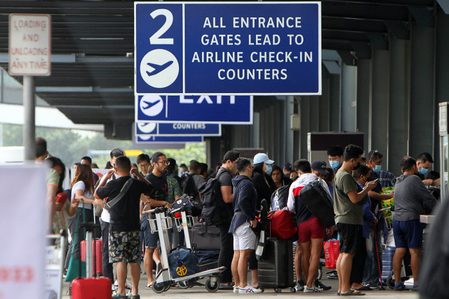SINGAPORE – Domestic destinations beat even the well-loved Hong Kong and Japan for Filipino travelers, according to travel and experience app Klook.
“Domestic travel is something that we started during COVID time and it has continued to grow even [until] now and we continue to see the growth not stopping,” said Eric Gnock Fah, co-founder and president of Klook, in an interview with reporters.
“I think there’s so many things to do in [the] Philippines that even the Filipinos find it difficult to book by themselves and they will be using our platform to do that,” he added.
Local travel destinations remain to be the go-to of Filipinos on the Klook app, followed by Hong Kong and Japan — both because of tourist attractions Disneyland and DisneySea, respectively, and Universal Studios and teamLab planets for Japan. (READ: Eyeing discounts for your next grand getaway? Klook Travel Fest 2024 has got you covered)
South Korea, which Fah said was among the top tourist destinations for Filipinos pre-pandemic, “has not recovered as well.”
However, Fah noted that one key challenge for the country’s tourism industry is majority of its travel merchants — most of which are small businesses — remain offline.
This is reflected in a study conducted by the Asian Development Bank (ADB), where the Philippines ranked fourth out of the 6 Southeast Asian countries that the regional development bank scored according to the countries’ readiness to adopt smart tourism.
Thailand ranked first among the six countries, while Cambodia was in last.
According to the ADB study, the Philippines had the lowest score in terms of the number of households with internet access, having a competitive pricing for internet services, and mobile access affordability or having mobile devices and subscriptions accessible to the public.
Not even half or only 44% of Philippine households have access to the internet. The Department of Information and Communications Technology said they are targeting to increase the number of households with internet access to 60% by 2028.
For now, this remains an uphill battle for merchants on Klook. However, Fah noted that the government and local tourism offices are working with the platform to convince merchants to consider setting up shop online.
He said this would help merchants expand their opportunities for promotion, reaching the “new set of consumers who are willing to spend, and those of a younger demographic.”
“You can work with Klook to be digital, you could also build your own system to go digital,” Fah said.
“There are many ways and they can choose to go which way they want, but we will always be there and ready to help them and help ourselves, of course, it’s a win-win relationship to get the Philippine tourism to be much more digital.”
In May 2023, President Ferdinand Marcos Jr. green lighted a 5-year tourism development plan, which includes making internet accessible in 94 of the country’s key tourist destinations. – Rappler.com
